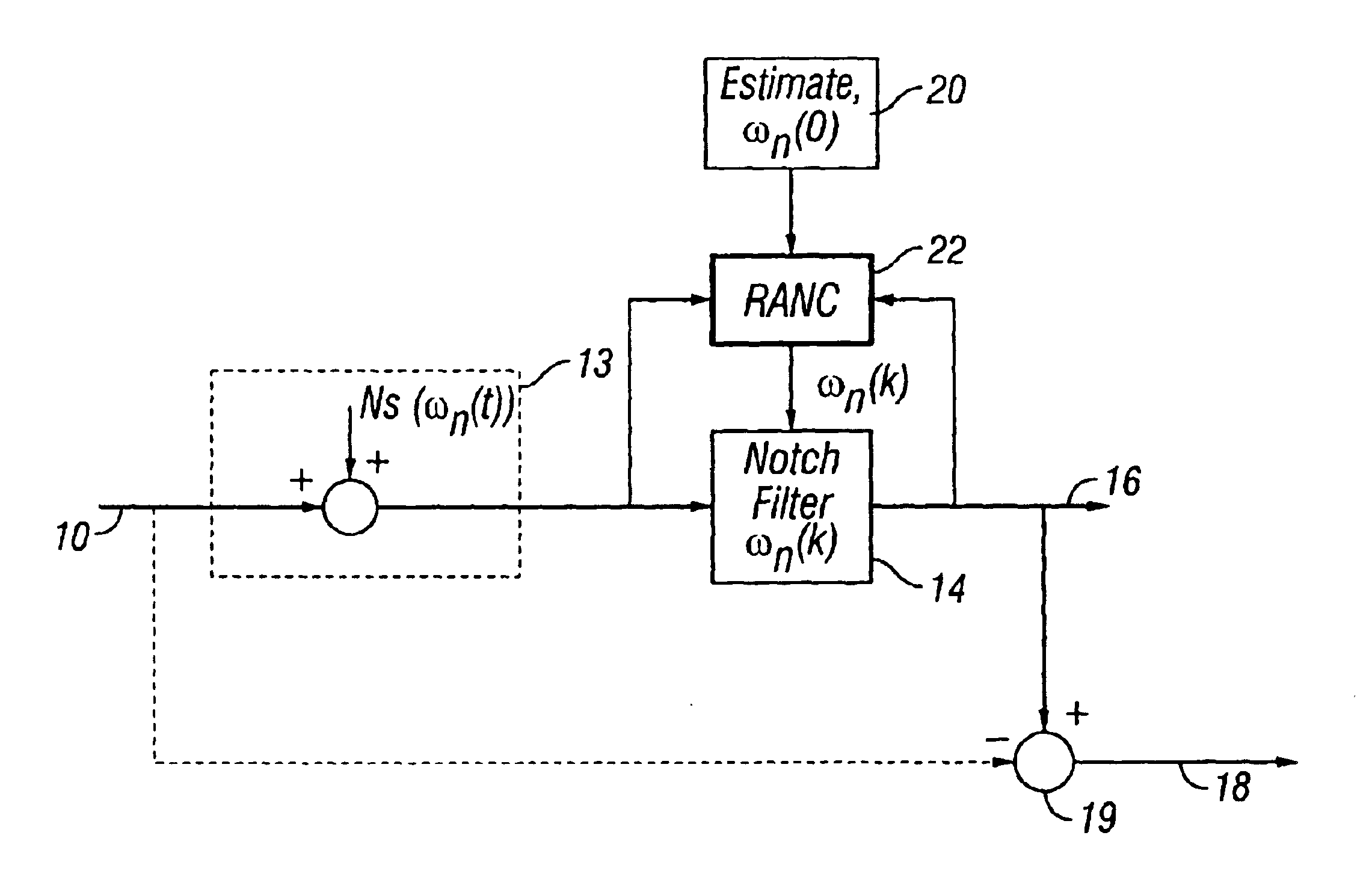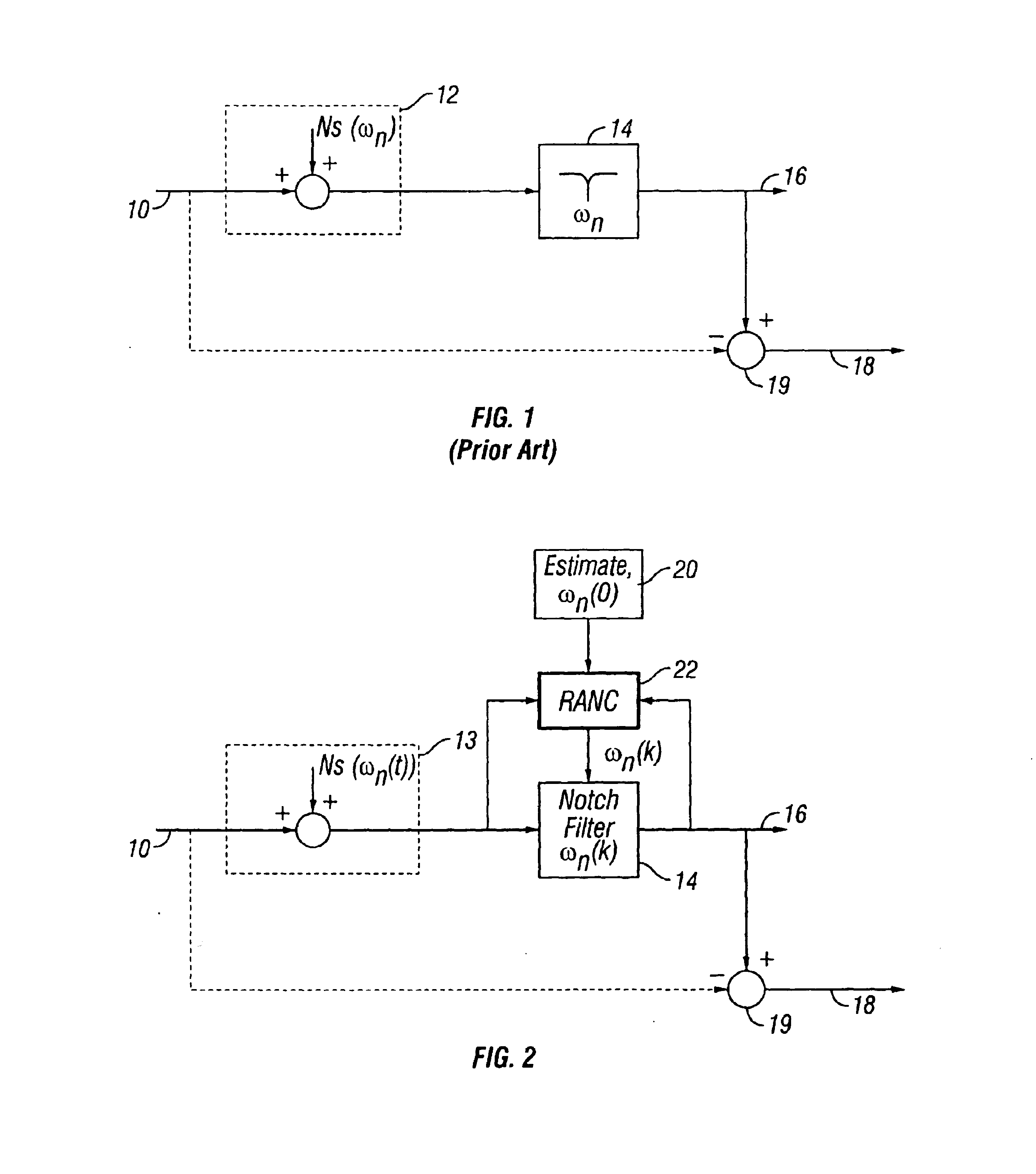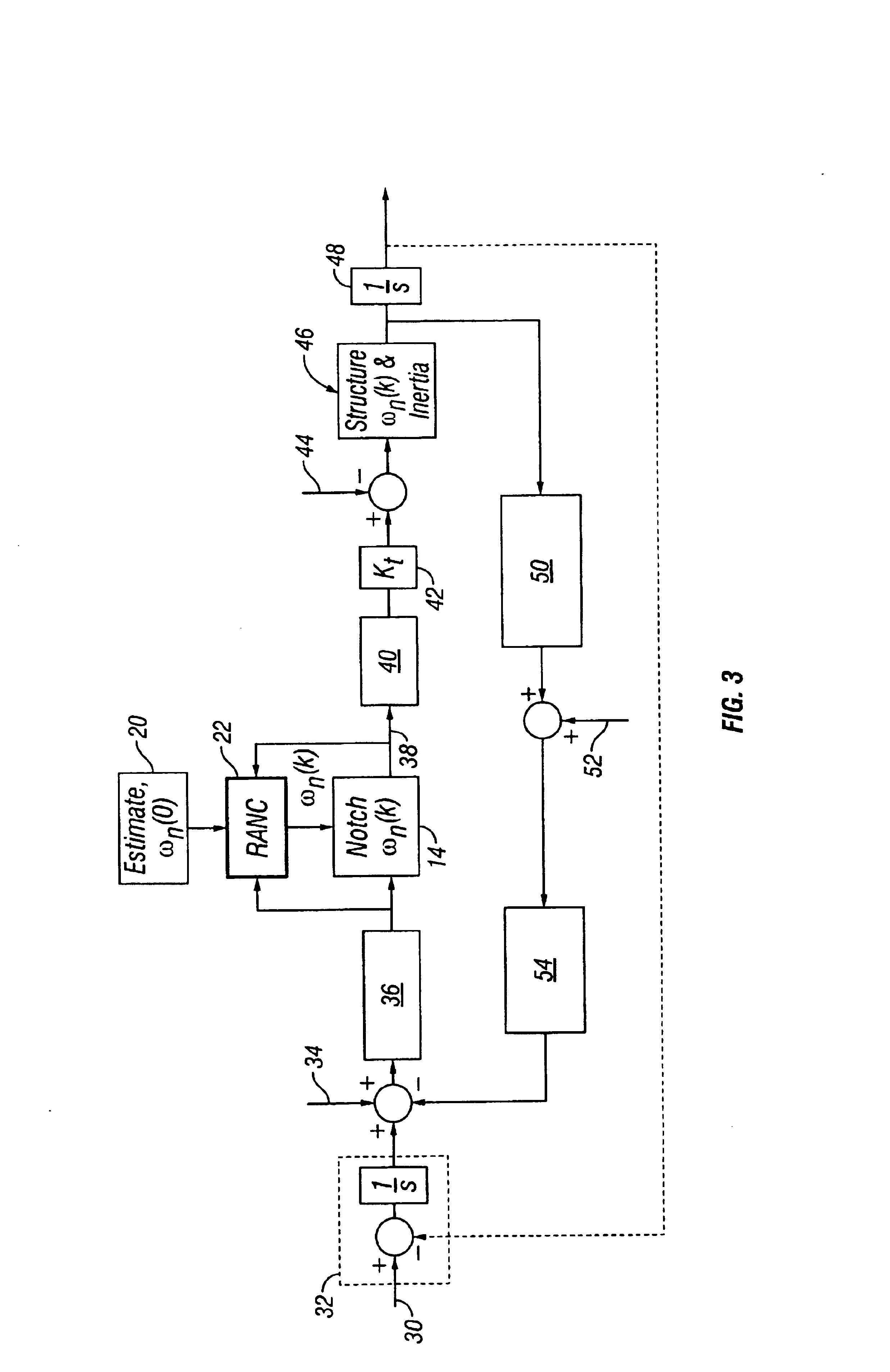Realtime adaptive notch compensator
a compensator and real-time technology, applied in the field of real-time adaptive notch compensators, can solve the problems of narrow bandwidth, significant degrade the controller's performance, and gain stability margins, and achieve the effect of reducing structural resonance in control and reducing noise harmonics
- Summary
- Abstract
- Description
- Claims
- Application Information
AI Technical Summary
Benefits of technology
Problems solved by technology
Method used
Image
Examples
example 1
A “hardware-in-the-loop” system 100 as shown in FIG. 7 was implemented which provided for realtime simulation of a yaw / pitch and azimuth / elevation gimbal system. The RANC was implemented on yaw and pitch control loops with a 3600 Hz update rate for the controller and gimbal model. Gimbals were modeled with one structural resonance each, yaw: 349 Hz and pitch: 219 Hz. The hardware was selected because it provides a significant source of electrical noise. The added components beyond those of FIGS. 2-6 are gyro reference 102, hardware demodulation noise 104, analog-to-digital converters 106,118, digital-to-analog converters 108,116, amplifiers 110,114, summing node 120, and gyro demodulator 112.
With the RANC off, the system proved unstable with initial estimates of ωn for yaw and pitch at 310 Hz and 200 Hz, respectively. With RANC on, the system was stable even with a step change from 325 / 200 Hz (yaw / pitch) to 349 / 219 Hz and could accommodate step rate commands, that is, the RANC opera...
PUM
 Login to View More
Login to View More Abstract
Description
Claims
Application Information
 Login to View More
Login to View More - R&D
- Intellectual Property
- Life Sciences
- Materials
- Tech Scout
- Unparalleled Data Quality
- Higher Quality Content
- 60% Fewer Hallucinations
Browse by: Latest US Patents, China's latest patents, Technical Efficacy Thesaurus, Application Domain, Technology Topic, Popular Technical Reports.
© 2025 PatSnap. All rights reserved.Legal|Privacy policy|Modern Slavery Act Transparency Statement|Sitemap|About US| Contact US: help@patsnap.com



